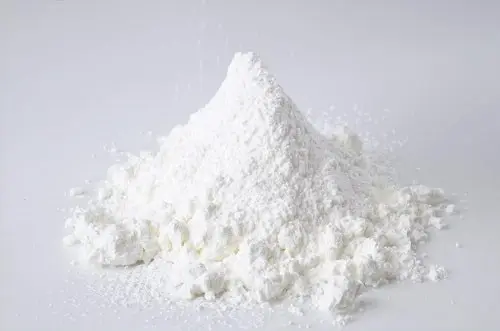White cement, a kind of Portland cement, shares all the advantages of its grey mortar counterpart. This makes it a common option for use in the great outdoors.
White cement is a great material to utilize for constructing high-quality buildings. The addition of color pigments to white cement can create remarkable visual effects without jeopardizing the building’s structural soundness. Artificial ceilings, decorative columns, and similar structures frequently make use of them.
A whitewash made from lime and white cement is best possible. The use of white cement boosts lime’s adhesive properties.
White cement and water are typically combined in a ratio of 2:1. Make sure there are no clumps by thoroughly combining the two ingredients. The desired texture is thick and semi-liquid, much like paint.
The next step is to prep the surface. If you want the cement to stick well, you’ll need to clean the area beforehand by scraping, scrubbing, or brushing, and they apply your white cement.

Advantages of White Cement
1. Smooth base
Bricklaying can be done using gray cement, but the wall’s finish must be white cement. In addition to strengthening the walls against the elements, white cement provides a smooth surface for painting.
2. Matte surface
White cement’s superior starting surface is one of the material’s many benefits. Meanwhile, its long-lasting matte finish conceals any resulting fractures. White cement’s effect on paints is another plus; the bright backdrop helps the color pop while also serving to keep the walls dry.
This cement is used for a wide variety of purposes, from smooth plaster to textured plaster to architectural finishing, and so on, thanks to its bright silky matt surface. It also makes the surface finer and more uniform looking.
3. Waterproof
White cement doesn’t need any special waterproofing treatments before it can be used in building. One benefit of using this cement for residential remodeling is its resistance to water. It works well in hot, rainy climates with high humidity. Even in humid regions, this cement’s inherent strengthening characteristics remain unchanged.
4. Sturdy
The compressive strength of concrete built with white cement can range from 25 to 50 MPA. Compressive strength is another area where white concrete excels above its grey counterpart, according to the research.
5. Binding power
Water and other substances is no match for this cement’s incredible binding power. It also has a great binding property, thus the structure is reinforced and supported.
This cement is easier to use as a finishing material before painting because it is more granular than grey cement. It’s also simple to use because it mixes well with water and sets quickly, making it ideal for a wide range of construction projects.
6. Better finishing
It provides a superior initial finish by masking even the tiniest of imperfections with a tough, matte coating. The paints will look better and last longer since the white surface reflects light and deflects moisture from ones walls.
7. No primer required
The fact that priming is not necessary is only one of many reasons to choose this cement for your home improvement jobs. Once this cement has been placed and given some drying time, you may next paint the walls any color you desire.
8. Offers strength
This cement has the same setting characteristics as grey cement & keeps all of its power after curing. The neutrality of this cement’s shade makes it a natural choice for decorative projects like home makeovers in which new paint will be applied.
Disadvantages of White Cement
1. Expensive
It costs four times as much to make white cement as it does regular Portland cement. The high price tag is the primary drawback of using white cement concrete. Compared to regular gray cement, this material is quite pricey. If you decide to use it, expect an increase in the total cost of your project. There are, thankfully, ways to make up for this price hike.
2. Low compressive tension
Because it has lower compressive tension, White Cement cannot be utilized in concrete.
3. Difficulty for masons
It is known for quick setting period, thus masons face difficulty during construction.
4. Surface defects
Working with white cement may be challenging. Time is of the essence while working with any kind of concrete, but the finer grinding consistency of this white cement results in a mix that cures up quicker than regular concrete.
The final appearance of the finish might be affected by anything that is placed on the slab throughout the finishing process.
5. Unwanted stains
Several things might cause unsightly stains on the surface of white cement concrete. Mud, Grass, oil, water, & food stains are just some of the substances that can discolor and disfigure a light concrete surface.
6. Time taking manufacturing process
There are some subtle differences between making gray cement and making white cement. Cement can be made whiter by the addition of metal oxides like iron and manganese during the manufacturing process. White cement is more expensive than gray cement because of changes in the manufacturing process and the price of raw materials.
7. Lower strength
When compared to regular Portland Cement & Pozzolana Portland Cement, white cement has less strength.
White cement production is distinct from ordinary Portland cement production. Expanding cement is achieved through the addition of white pigments made from limestone, chalk, and clay. The strength decreases as a result of this growth.
Conclusion
At the end of the day, the white cement foundation provides numerous advantages to your walls and surfaces, providing excellent value and quality for your money.
Santosh Kumar is a Professional SEO and Blogger, With the help of this blog he is trying to share top 10 lists, facts, entertainment news from India and all around the world.
